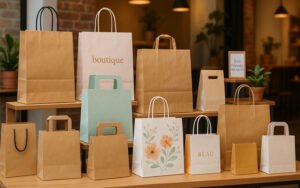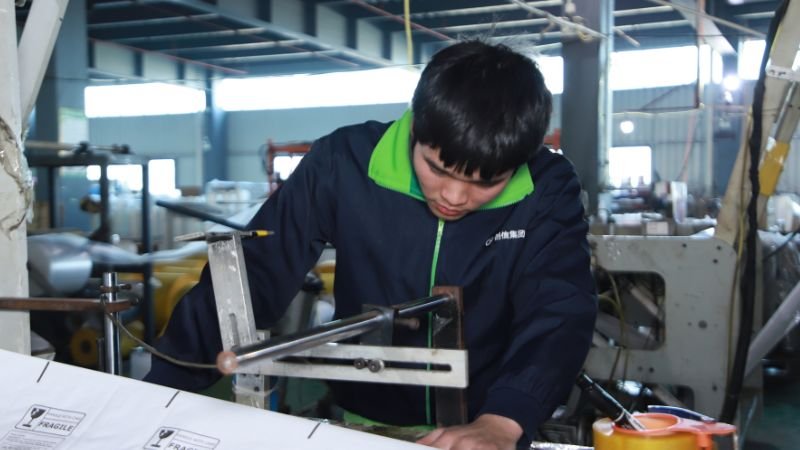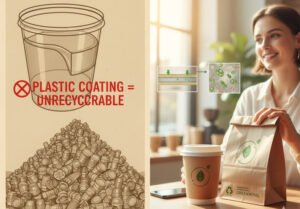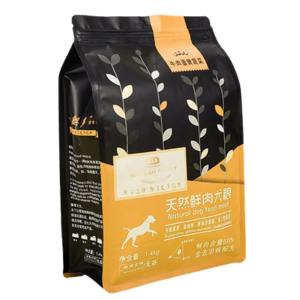Paper bags look simple. But behind every design, color, and logo, there’s a safety standard we have to meet—or risk serious consequences. Poor ink quality or overlooked chemical residues can damage not only your product image but also your brand reputation. So, let’s unpack this.
Paper bag printing safety revolves around using certified inks, food-safe processes, and international compliance. Bags must pass rigorous tests to ensure zero toxic residues, colorfastness, and odor neutrality—especially for food-grade packaging. Ignoring this can result in failed customs inspections, rejected shipments, and customer health risks.
We print 5 million bags a day at GreenWing, and let me tell you—cutting corners is not an option. Let’s break down what real safety looks like in our world.
Why Does Paper Bag Printing Safety Matter?
Let’s put it this way:
You could have the strongest paper bag in the world.
But if the ink smears onto your food, contains lead, or smells like a nail salon—nobody’s using it.
This is especially critical for food packaging. Ink migration can contaminate the food inside. And many countries have strict import rules around this. The U.S., Canada, EU—they all demand safety documentation, especially for food-contact packaging.

What Are the Key Safety Standards?
There’s no single global standard, but here are the most recognized ones we follow at GreenWing:
• ISO 22000 – Food safety management
• FSC certification – Sustainable sourcing
• RoHS & REACH – Control of hazardous substances
• FDA compliance – U.S. standard for food-contact packaging
• EN 71-3 – European standard for ink migration (especially for kids’ packaging)
And no, these aren’t just for show. Customs will ask. Clients will ask. You should ask too.
What Makes Ink “Safe”?
Safe ink isn’t just about being “non-toxic.” It’s about what happens after printing—especially under heat, pressure, and moisture.
At GreenWing, we use water-based and soy-based inks. These inks don’t release VOCs (volatile organic compounds), which means no nasty smells or toxic particles. They’re perfect for food packaging, and fully compliant with FDA and EU regulations.
Avoid petroleum-based inks unless you enjoy dealing with rejected shipments and customer complaints.

How Do We Test for Safety?
Great question. You can’t just trust a supplier saying, “Don’t worry, our ink is safe.” Nah. We back it with testing reports and third-party certification.
Here’s what we routinely test for:
• Heavy metals like lead, cadmium, and mercury
• Ink migration under heat and moisture
• Odor neutrality (yes, we literally smell the bags)
• Colorfastness and rub resistance
• Moisture barrier and grease resistance (for food bags)
We work with SGS, TÜV, and Intertek for regular audits. Every batch for our large food clients comes with a full compliance sheet.
What Happens If Safety Standards Are Ignored?
I’ve seen it before. A brand chooses a cheaper supplier. Everything looks fine—until their shipment gets stuck at customs for missing FDA paperwork. Or worse, a customer files a complaint about food contamination. One viral TikTok later… disaster.
Ignoring safety doesn’t just cost money. It kills brand trust. In today’s digital age, you only need one bad review to go viral.
And here’s something Mike (our typical client) would understand: When shipments are delayed over a certificate issue, that means missed sales windows, penalties, and angry retailers. No one wants that.
What Should You Ask Your Supplier?
Here’s your quick checklist:
• ✅ Are your inks food-safe and certified?
• ✅ Do you have updated compliance reports (FDA, RoHS, REACH)?
• ✅ Do you use water-based or soy-based inks?
• ✅ Can you provide odor and migration test results?
• ✅ Do you follow ISO or HACCP standards for food contact safety?
If the sales rep sounds vague or dodges the question? Run.
At GreenWing, we actually proactively send these reports before you even ask. It’s just how we work.

What’s the Role of Custom Printing in All This?
Customization is great. But it can also introduce risk.
Every custom ink, logo placement, or lamination layer must be tested again. That’s why we recommend starting with a sample run and pre-shipment testing for large orders.
We even offer virtual print previews and mockups, so you can spot issues before they hit the press. Custom doesn’t mean careless.
What If You’re Not in the Food Industry?
Still matters.
Even non-food clients need to think about user experience, shelf appeal, and brand trust. Imagine a fashion bag that smells like chemicals—that ruins the unboxing moment.
Even worse? Printing that fades, rubs off, or stains the contents inside.
This is why durability and ink fastness testing is a must, regardless of industry.
Conclusion
Printing safety isn’t a “nice-to-have.” It’s non-negotiable. If your paper bags aren’t safe, certified, and compliant, they’re a liability—not an asset. At GreenWing, we don’t leave safety to chance. Neither should you.







